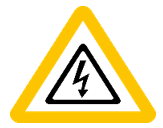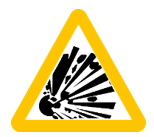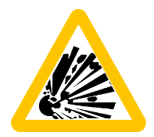Title Page
-
Site conducted
-
Conducted on
-
Prepared by
-
Location
Risk Category Standard - Working with Electricity
Responsibilities
-
Who is the Risk Owner of this risk category?
-
Who is the Control Owner of the risk category?
-
Who is the Risk Executer of this risk category?
-
Who is the Task Executers of this risk category?
Competencies
-
Is the Risk Owner trained and competent to manage this risk category?
-
Is the Risk Control Owner trained and competent to manage this risk category?
-
Are the Risk Exacters trained and competent to manage this risk category?
-
Are the Task Executers trained and competent to manage this risk category?
Appointments
-
Is the Risk Owner appointed to conduct his/her duties? (WAH Planner, risk assessor.....)
-
Is the Risk Control Owner appointed to conduct his/her duties? (WAH Planner, risk assessor.....)
Risk Management Requirements
-
Enable and conduct the respective risk assessments for the task (IBRA, PTRA) to specify the risks and precautions to be in place for the task
-
Ensure the standard operating procedure is in place where applicable, kept updated and workers are trained on it.
-
Issue required Permit to Work and/or isolation permits before work commences.
-
Train and authorise permit issuers and acceptors to be competent for work with electricity.
-
Ensure electrical equipment are designed, manufactured, operated and maintained according to in-country standards.
-
Refer to the Working at heights, Confined space and/or High risk machinery risk category standards if the work includes anything relevant to these.
Earthing / Grounding of Equipment
-
Earth continuity inspection and testing of equipment must be done as per site specific schedules to ensure it is effective.
-
Only use approved and tested testing equipment (e.g. voltage detector) to determine zero potential by competent and authorised persons.
-
Earth testing verification is done by competent and authorised personnel.
-
Remove static electricity on equipment such as pipes and mobile machinery by applying earth clamps.
-
Static electricity from the medium voltage cables needs to be drained before work can be conducted.
-
All earth clamps must be recorded before and after task to ensure it is removed before power is restored.
-
Testing equipment must be verified, calibrated when needed, and earth clamps must be inspected frequently to ensure that they are fit for purpose.
Conduct Positive Isolation
-
Primary isolation must be done by switching the power off from the supply and lock<br>out with a lock. LOTO = Lock Out Tag Out.
-
Never use control circuits such as emergency stops, stop buttons or limit switches<br>as the primary isolation.
-
Make use of the lockout procedure regardless of the timespan of the work.<br>LOTO = Lock Out Tag Out.
-
If a multi-discipline team (e.g. fitters, electricians) is working on the same<br>equipment, each person needs to apply their own lock to a multiple lockout device.
-
Remove the key from the lockout and keep it safe.
-
Keep record of the lockout as per lockout procedure.
-
Do not allow other people to isolate or restore on your behalf.
-
Test for zero energy on equipment — check that the equipment has been isolated by trying to start and operate the equipment.
-
Always comply with your site specific isolation, testing and lockout procedures.
Safety Interlocks
-
Isolation of the main power source (Motor Control Centre) by a competent<br>and authorised person is required, to eliminate electrical exposure before<br>access to the panel or equipment is possible.
-
Power cannot be restored unless the panel or door interlocks are secured.
-
One person One key rule applies. LOTO = Lock Out Tag Out.
-
Safety interlocks must be tested as per site requirement to ensure that<br>they operate as per design.
-
All safety interlocks must comply with legal in-country requirements.
-
Interlocks may never be bypassed.
Use Suitable Electrical Tools and Testing Equipment
-
Systems must always be de-energised and positively isolated before work,<br>unless the task requires the system to be energised.
-
Use the correct tools and testing devices for the job at hand that are safe for use.
-
Live testing, fault-finding or diagnosis should only be done by competent and<br>qualified personnel.
-
Pre-test or inspect testing and measuring equipment prior to work to ensure<br>equipment is functioning correctly, set correctly and ancillary equipment such<br>as leads and probes are without defect and attached correctly.
-
Testing of equipment must be done to ensure that the insulation resistance<br>of equipment are at the correct level.
-
Ensure that the tools are insulated and in good order before commencing of work.
-
Ensure that all testing and measuring equipment are calibrated or tested and<br>certified for use as per site requirements.
-
Ensure that the testing equipment are rated for the correct voltage when used<br>for testing electrical equipment.













